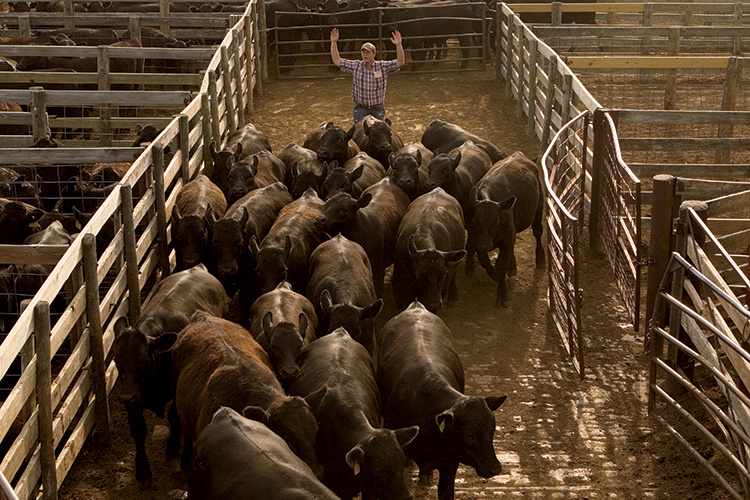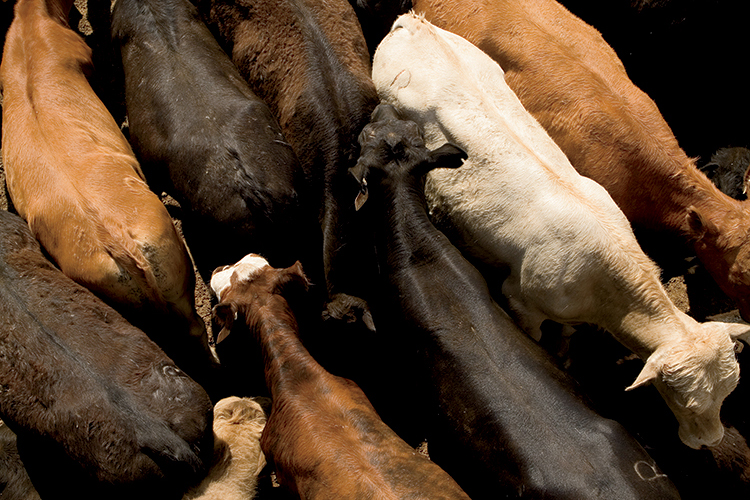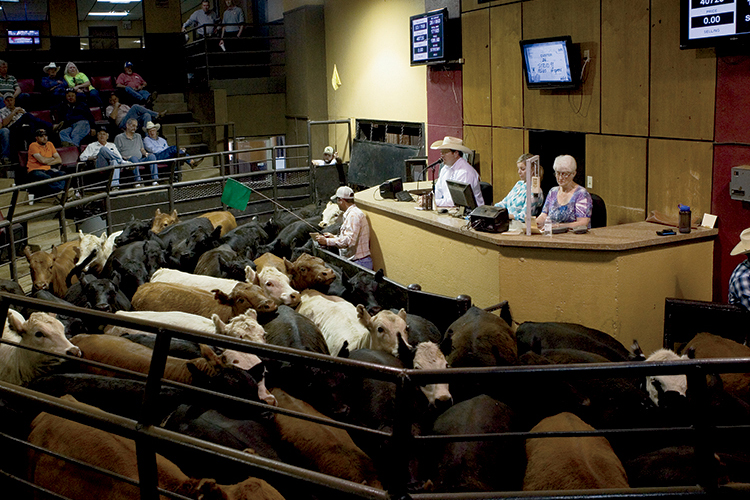Home > Oklahoma > Oklahoma Crops & Livestock > Oklahoma National Stock Yards Drives the Cattle Market
Oklahoma National Stock Yards Drives the Cattle Market

There was a time when major stockyards were economic staples in some of the country’s burgeoning cities, including Chicago, Louisville, Kansas City and Sioux City. And then there was one: Oklahoma National Stock Yards (ONSY). Founded 80 years ago, ONSY still thrives today.
While history runs deep in Stockyards City, it’s not sentiment that keeps the last of the great stockyards open. It’s business, and plenty of it.
“We get more cattle than any other auction in the nation and more buyers,” says Rob Fisher, president of ONSY. Sitting on approximately 110 acres, ONSY moves an estimated 500,000 head through its gates annually. Each Friday, the cattle begin to arrive from Texas, Tennessee, Arkansas, Louisiana and elsewhere. Then on Monday mornings, the auctions begin. By early Wednesday, the semis have loaded and left, and the yard goes quiet for a moment before the new cattle begin to arrive.
The yard is capable of holding about 24,000 head at one time. An average week at Oklahoma City would be 6,000 head bought and sold, but many weeks see the total top 12,000. That number translates to an estimated $15 million worth of cattle loaded into 200 semitrucks to be delivered to locations in 41 states.

Vital to Success
Fisher knows a thing or two about the stockyards. He’s been working there since age 9 and achieved his goal in 1972 of buying his own commission company, Farmers, with his father as his partner. After he accepted the ONSY president post, Fisher sold his company to his son. The eight commission firms handle the cattle, Fisher says.
“They do the sorting and then present the animals for auction in the ring.” The other seven commissions operating in Stockyards City are Central Halliburton, Custer & Custer, J & J, W. H. May, National Livestock, Stockman Oklahoma and Western Livestock.
Location is another asset of the stockyards. Oklahoma City is located in the path that feeder cattle move across the country from ranches to feeding operations. The majority of feeder cattle (700 pounds and heavier) travel out of the stockyards to feeding operations further west.
Another key to the survival of ONSY is the long-term view taken by early leaders. Stockyards City was tied into the Oklahoma City’s sewage system when the service became available, avoiding the environmental troubles that closed most of the other major stockyards in the 1970s.

Mixing Business With History
The basic work of Stockyards City is still the same – buying and selling cattle.
“The customers are very dependent on this market,” Fisher says. “I couldn’t begin to tell you how many customers ship cattle here whose dads and granddads also shipped cattle here. There are lots of ways to sell livestock these days, but a live auction is still the most accurate.”
There have been changes over the years, he says, in terms of modernization. ONSY uses the latest technology hardware and software in its operations today, and video cameras are located throughout the property to monitor everything that happens in the stockyards.
Since its founding, Stockyards City has been the place for cattlemen, horsemen, farmers, ranchers, and real cowboys to do business, exchange information and socialize.
“This place is filled with character, tradition and a great competitive atmosphere that only a stockyard can produce,” says Roy Don May, who was watering cattle at the stockyards at age 5 and is now the owner of W.H. May Commission Co.
The lone survivor of the era when selling cattle was the biggest business in many big cities, Oklahoma National Stock Yards is now the recognized standard bearer. Sales at those Monday morning auctions set cattle prices across the nation.
“People call from coast to coast, from border to border, wanting to know what the cattle market is in Oklahoma City,” May says. “Our company is proud to be part of the family of livestock marketers.”



